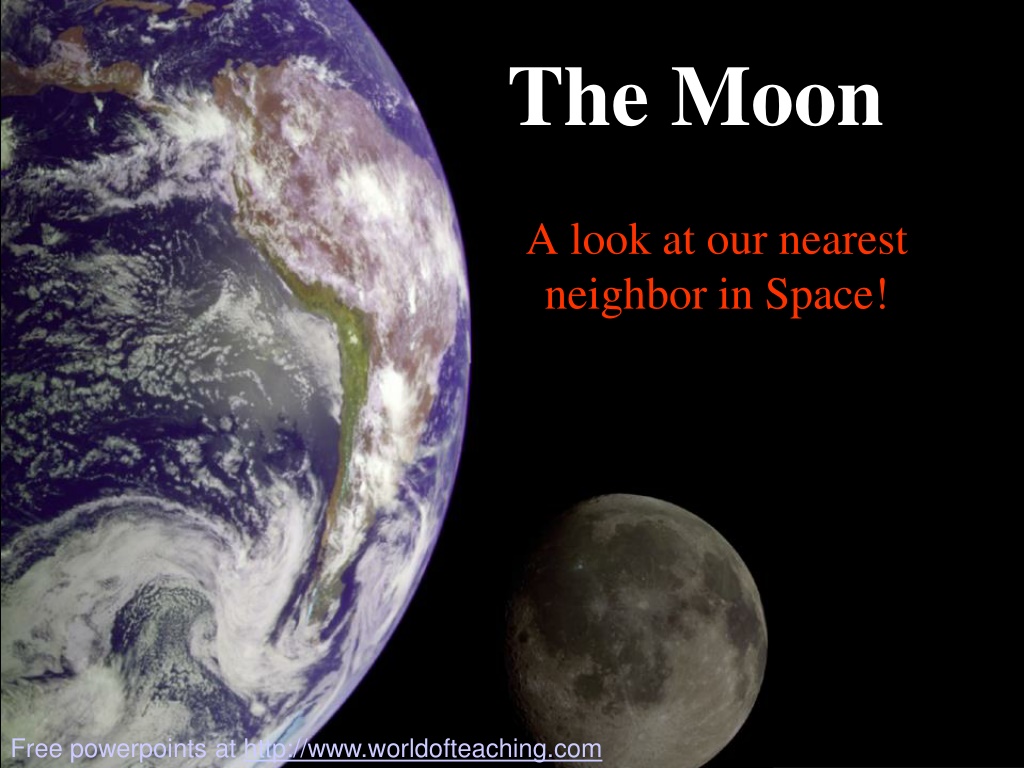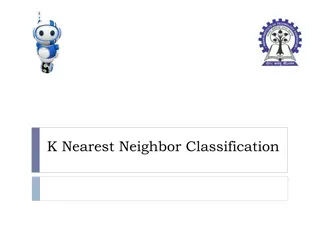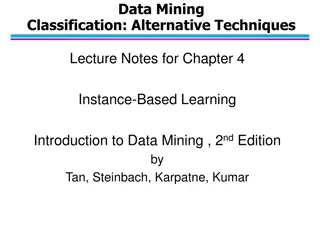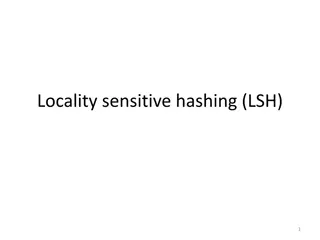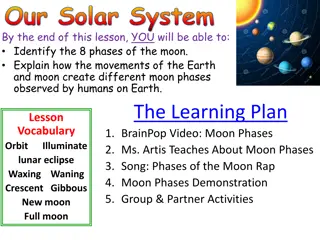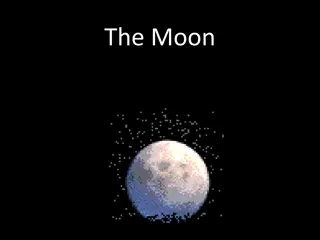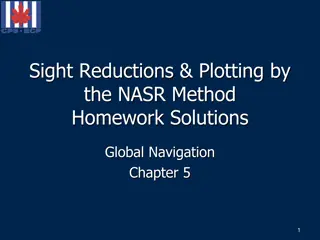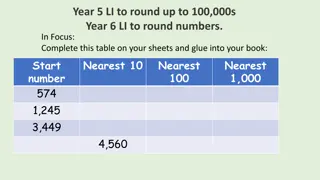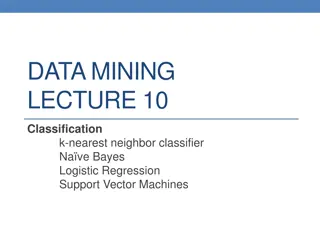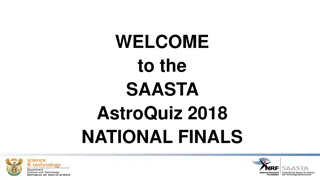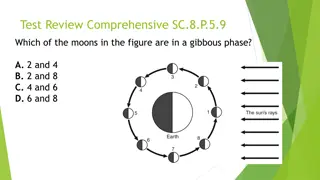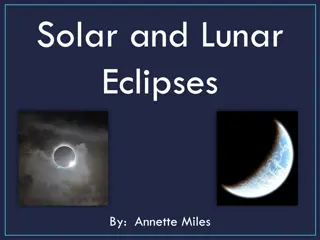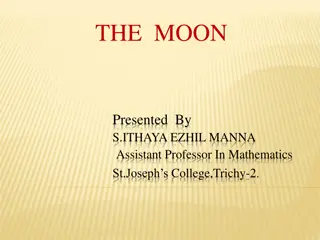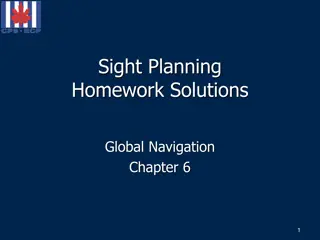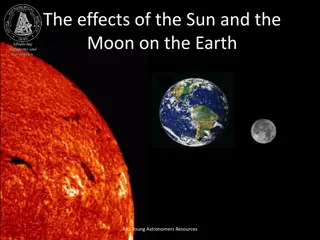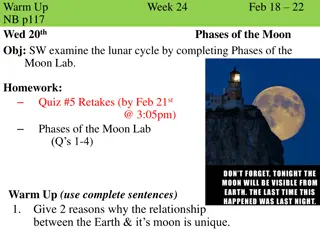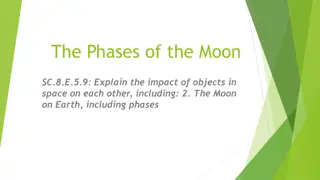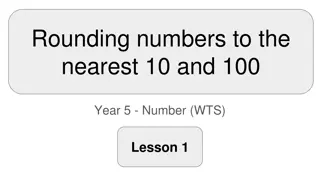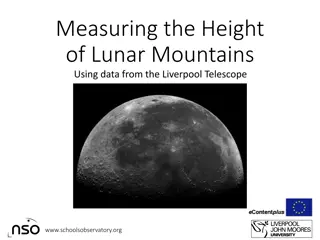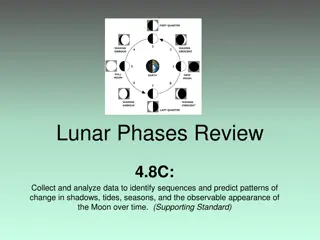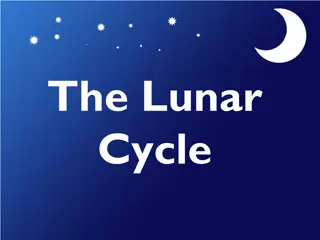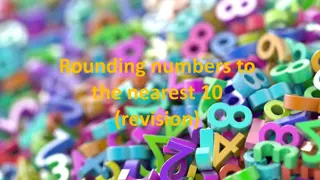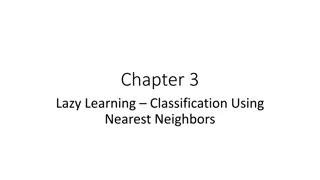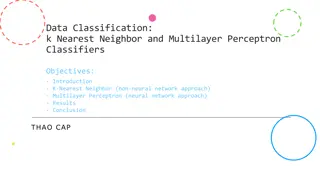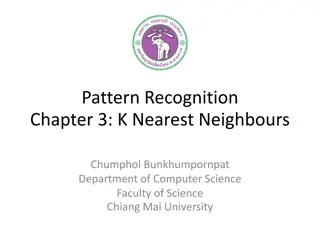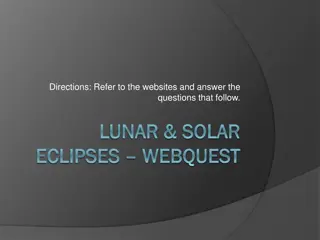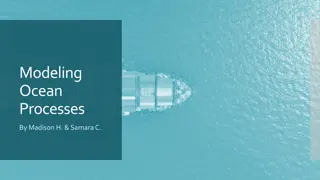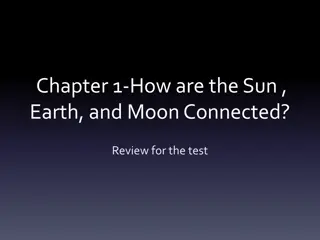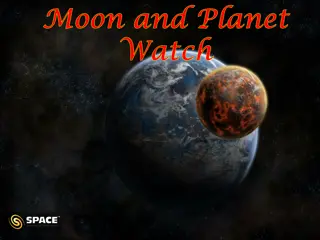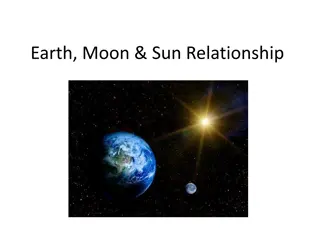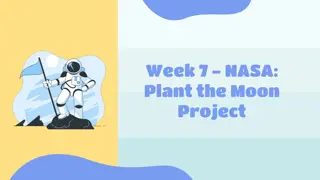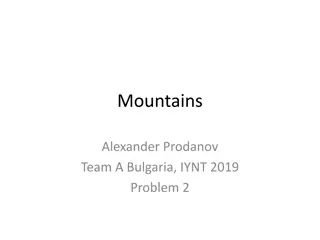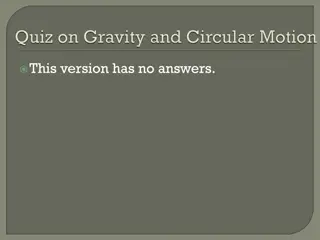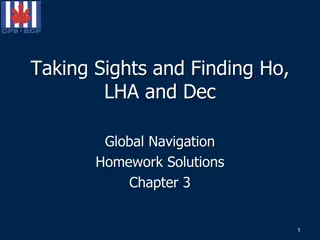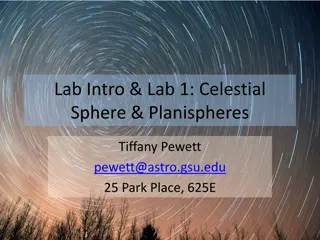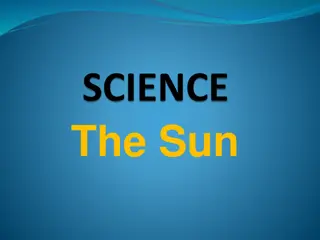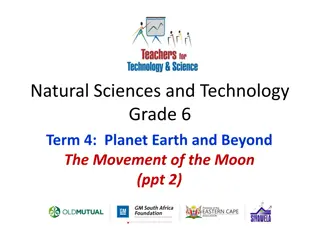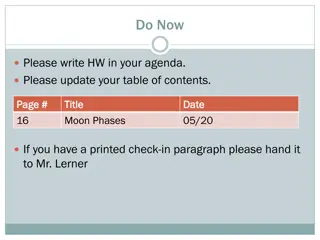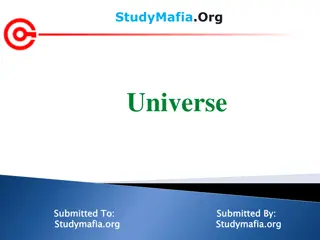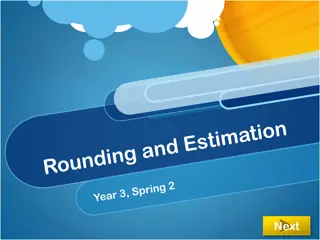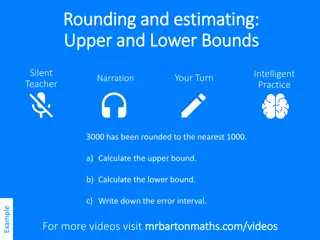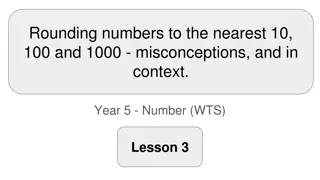Exploring the Moon: Our Nearest Celestial Companion
Delve into the captivating world of the Moon, Earth's only natural satellite. From its surface features like highlands and craters to its movements and phases, discover interesting facts about this lunar body through detailed images and descriptions. Unveil the mysteries of the Moon's origin, composition, and significance in our Solar System.
Download Presentation

Please find below an Image/Link to download the presentation.
The content on the website is provided AS IS for your information and personal use only. It may not be sold, licensed, or shared on other websites without obtaining consent from the author. Download presentation by click this link. If you encounter any issues during the download, it is possible that the publisher has removed the file from their server.
E N D
Presentation Transcript
The Moon A look at our nearest neighbor in Space! Free powerpoints at http://www.worldofteaching.com
What is the Moon? A natural satellite One of more than 96 moons in our Solar System The only moon of the planet Earth
The Moons Surface No atmosphere No liquid water Extreme temperatures Daytime = 130 C (265 F) Nighttime = -190 C (-310 F) 1/6 Earth s gravity
Lunar Features - Highlands Mountains up to 7500 m (25,000 ft) tall
Lunar Features - Craters Up to 2500 km (1,553 miles) across Most formed by meteorite impact on the Moon Some formed by volcanic action inside the Moon
Lunar Features - Maria See Explanation. Clicking on the picture will download the highest resolution version available. Originally thought to be seas by early astronomers Darkest parts of lunar landscape Filled by lava after crash of huge meteorites on lunar surface 3-4 billion years ago Mostly basalt rock
Craters Maria Does this photo show us a limb or terminator line?
Movements of the Moon Revolution Moon orbits the Earth every 271/3 days The moon rises in the east and sets in the west The moon rises and sets 50 minutes later each day Rotation Moon turns on its axis every 27 days Same side of Moon always faces Earth
Its Just a Phase Moonlight is reflected sunlight Half the moon s surface is always reflecting light From Earth we see different amounts of the Moon s lit surface The amount seen is called a phase
Waxing and Waning New moon Waxing Crescent First Quarter Waxing Gibbous Full moon Waning Gibbous Third Quarter Waning Crescent New moon last (third)quarter waning Moon moon orbit`s earth SUN gibbous moon crescent earth full moon new moon gibbous moon crescent waxing Moon first quarter
FOUR MAIN SHAPES Four Basic Shapes FULL CRESCENT GIBBOUS QUARTER
Earth Plane of earth s orbit Moon Plane of lunar orbit Moon
Lunar Eclipses Moon moves into Earth s shadow this shadow darkens the Moon Umbra Penumbra About 2-3 per year Last up to 4 hours
Solar Eclipses Moon moves between Earth and Sun Moon casts a shadow on part of the Earth Total eclipses rare only once every 360 years from one location!
The Tides Tides caused by pull of Moon s gravity on Earth High tide Side facing Moon and side away from Moon Every 12 hours, 25 minutes Low tide On sides of Earth
